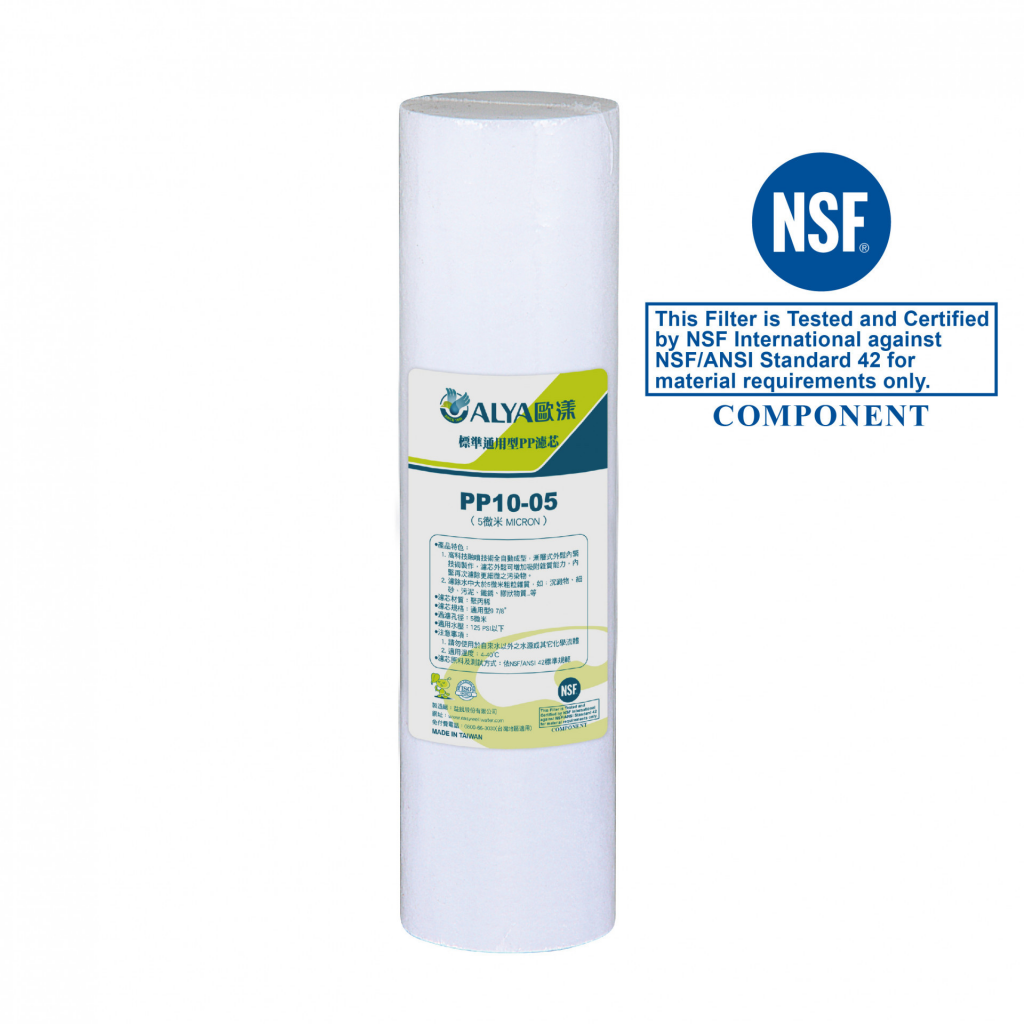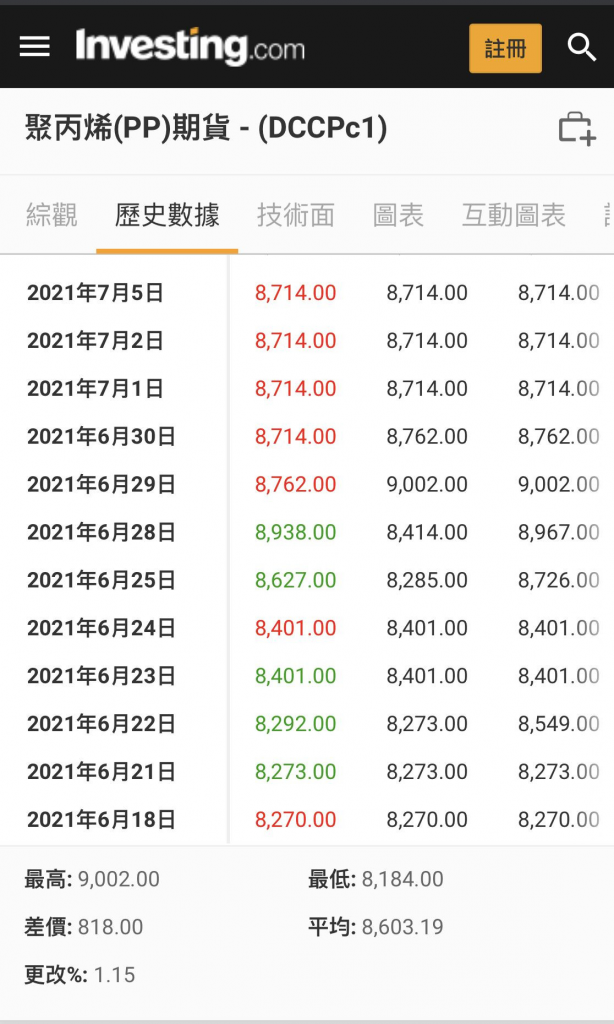
1. Preface
There exists a vast difference in prices for identical products under different brands across all products in the world. Take the common personal item “watch” as an example to explore. This dispensable accessory shows the most significant price gap among all products. The most expensive watches cost millions, yet people still buy them, while the cheapest ones cost only a few hundred pounds. Next, let’s delve into a simple and small PP cotton melt-blown filter cartridge and discuss why it also has several times the price difference.
2. Function and Production Process of PP Melt-blown Filter Cartridges
Before exploring the price difference of PP melt-blown filter cartridges, it is the author’s responsibility to inform everyone about the function and production process of this product.
(1)Function of PP Melt-blown Filter Cartridges
A PP melt-blown filter cartridge, with a simple process and no need for other components, is a crucial component in all water purifiers and water filtration devices. It uses plastic melt-blown technology to achieve the filtration pore size we set, swiftly removing impurities in water that are invisible to the naked eye using a straightforward filtration method.Before the introduction of PP melt-blown filter cartridges, most household filtration systems used wound filter cartridges (as shown below), which were made from cotton yarn. Besides the higher cost of cotton yarn materials, their production time was longer compared to melt-blown filter cartridges. Additionally, cotton yarn filters required a plastic central core for support, making them unable to compete in price with melt-blown filter cartridges. As a result, the market for wound filter cartridges has been largely replaced by PP melt-blown filter cartridges.

(2)The Production Process of PP Melt-Blown Filter Cartridges
The production process of PP melt-blown filter cartridges is not complicated. It can be completed through several steps, as follows: Preparation of materials » Drying » Melt-blown forming » Cutting » Shrink film packaging » Labelling » Packing and boxing.
Let’s watch the following video link to see the current production of PP melt-blown filter cartridges:
3. Product Price Variance
For example, a 10-inch long, 2-inch outer diameter PP melt-blown filter cartridge can be found on Yahoo! Auctions at https://ppt.cc/fIlBRx. Its retail price ranges from $10 to $300 TWD, showing a price difference of up to 30 times. Whether its cost-performance ratio matches can be determined from the following explanation.”
4. Reasons for Large Price Differences in Products
The first reason for significant price differences: Because the product has obtained certification from NSF (National Sanitary Foundation) in the United States. Let’s first understand what NSF stands for. In Chinese, it means “美国卫生基金会,” and in English, it is the National Sanitary Foundation.
Typically, manufacturers producing PP melt-blown filter cartridges will apply for the NSF/ANSI 42 standard. Let’s also understand the contents of the NSF/ANSI 42 standard:
Standard 42 includes minimum standards for material safety, structural integrity, product information, and performance regarding reducing harmful substances and non-health-related contaminants. The most common claims are for chlorine and particulate reduction. The most common technology in Standard 42 is activated carbon filtration, and the standard covers both Point of Entry (POE) and Point of Use (POU) systems.
When manufacturers submit samples to the NSF for verification, the main focus is on material safety testing and analyzing chemical release after immersion testing.
After submitting the application, the NSF conducts a plant inspection of the manufacturer. Certification is granted only upon successful plant inspection and laboratory results. Certification is valid for five years, after which re-testing and certification fees must be paid. The total fee over five years is approximately 2 million New Taiwan dollars (including annual fees).
Why is applying for NSF so expensive? Honestly, every manufacturer applying finds it too expensive.
- Just the data review fee before testing starts is about US$6000.
- Product testing costs about US$19000.
- Annual registration fee US$8100 (per year) x 5 years = US$40500.”
NSF charges manufacturers an annual fee, used for unannounced annual inspections at the factory. The inspection includes:
- Checking whether certified products (including those sold and in factory inventory) match the invoices for purchased raw materials.
- Verifying if the suppliers of originally submitted materials have been changed without notification. NSF regulations stipulate that certified manufacturers may not switch suppliers midway through certification without paying additional fees for material testing.
- Ensuring that certified product labels are posted according to NSF requirements, and checking for any false labeling on uncertified products.
- Confirming that the quantities in the accounting books match the sales figures plus the product inventory.
- Issuing fines if discrepancies or false information are discovered during inspections.
To verify if the product you purchased or are considering purchasing is NSF-certified, the simplest method is to visit the NSF official website and search using the English company name of the manufacturer. For example: https://ppt.cc/fbESxx
- The second major reason for the significant price difference: NSF conducts material safety testing according to Standard 42, performing chemical release analysis after immersion testing. Therefore, applying manufacturers must exercise great caution in selecting production materials. The raw materials and manufacturing processes must not release any toxins. Additionally, applying manufacturers must adhere strictly to the approved product material formulations during production and are not permitted to make arbitrary changes.
In other words, products without NSF certification are not required to comply with NSF standards. They can add or use non-compliant materials, including recycled waste materials. Whether toxins are released is not regulated, resulting in cost differences in products.
As of July 7, 2021, the futures price of PP polypropylene was approximately NT$8,603.19 per metric tonne, with market prices ranging around NT$44-46 per kilogram in Taiwan. Recycled PP plastic ranges between NT$500-1,000, creating a price difference of up to 5-8 times.

5. Reasonable retail price of PP melt-blown filter cartridge
In recent years, the water purifier market has become highly competitive. There are increasing numbers of manufacturers applying for NSF product certification for water purifier filter cartridges. It is increasingly difficult to include all application costs in the product price; at most, only a portion of the application fees can be included. For example, if we expect to sell 200,000 PP melt-blown filter cartridges within five years, the maximum amount that can be included in the retail price per cartridge is NT$10.
Therefore, a reasonably priced NSF-certified PP melt-blown filter cartridge should retail between NT$80 and NT$100.
6. The difference between certified and uncertified PP melt-blown filter cores
Manufacturers are willing to spend so much money to apply for product certification in order to gain the trust of B2B customers, ensuring continuous and sustainable orders. It also proves that the factory itself has the capability to obtain rigorous product certifications. When facing consumers, besides ensuring product quality, certification can also prevent product quality issues or the release of toxins, thus avoiding consumer complaints, claims, and even lawsuits.
Uncertified PP melt-blown filter cores have unknown sources of raw materials and have not been inspected by third-party certification bodies. It is unknown whether they release chemicals or toxins. Some manufacturers and distributors, driven by price considerations, import cheap PP melt-blown filter cores from less developed countries and sell them through various channels in Taiwan. Whether their raw materials and production processes comply with non-toxic release standards is unknown.
7. Currently, the world’s most credible certification bodies
(1)NSF Located in Michigan, USA, founded in 1944. Product certifications are renewed every five years, with certification fees being the highest among all certification bodies. NSF

(2)The “Gold Seal” product certification from the Water Quality Association (WQA) in the United States
Established in 1959 and headquartered in the United States, originally formed as a private association for water treatment, specializing in serving its members. Aside from membership dues, its income comes from organizing annual seminars and exhibitions. In 1974, it began establishing laboratories and offering water purification equipment testing and certification services. The “Gold Seal” product certification mark originated from these developments.

https://ppt.cc/fOegSx
https://www.wqa.org
The Taiwan Plastics Centre is a semi-official foundation and a technical development unit. It is also designated as a Class III recognized laboratory under Taiwan’s MIT Smile Product Verification System, accepting private sector commissions for testing water filtration equipment and drinking water treatment devices. Products that pass the tests can obtain certification with the Ministry of Economic Affairs’ Industrial Development Bureau MIT Smile Logo, which requires renewal every two years.

